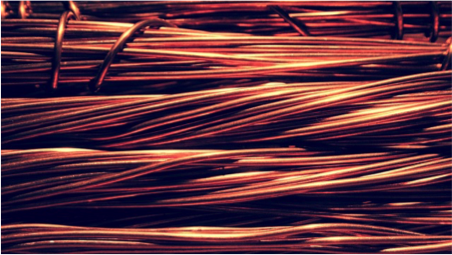 When discussing the components in an electrical grounding system, we often hear the terms “copper-clad steel” and “copper-bonded steel” used interchangeably.Though it may seem inconsequential, each term represents a different copper plating process, in which the copper is composite on the steel core. In this post, we consider the question, what is the difference between copper-clad and copper-bonded steel?
When discussing the components in an electrical grounding system, we often hear the terms “copper-clad steel” and “copper-bonded steel” used interchangeably.Though it may seem inconsequential, each term represents a different copper plating process, in which the copper is composite on the steel core. In this post, we consider the question, what is the difference between copper-clad and copper-bonded steel?
What Do Copper-Bonded and Copper-Clad Steel Have In Common?
The reason the two terms are often used interchangeably is because, on a basic level, they appear the same. Both consist of a steel core and copper exterior.
For use in grounding, both products possess the high tensile strength of steel coupled with the corrosion resistance of copper.
Compared to pure copper, the conductivity of these bi-metallic conductors is lower. To match the current carrying capability of copper, the diameter and copper thickness of bi-metallic conductors are increased. Depending on a conductor’s specific application and region, conductivity requirements may differ.
What is the Difference Between Copper-Bonded and Copper-Clad Steel?
The primary difference between these two types of processes is the way the copper is composited on the steel core.
Forming Process
Copper-bonded steel is manufactured through a continuous electro-plating process of copper over steel core, resulting in a permanent molecular bond between the two materials.
The technique, known as electrophoretic deposition (EDP), creates a homogenous layer of copper over the steel core, regardless of whether the product is a wire, solid conductor or ground rod. The copper layer thickness is measured in unit of [mils].
Copper-clad steel is manufactured by installing two copper strips over a steel core using pressure and heat to form a metallurgical bond. The copper lair thickness is adjusted to the percentage conductivity of pure copper. Most common conductors used in the U.S. are 40% conductivity of copper.
Performance and Uses
Copper-bonded steel is mainly used in manufacturing ground rods, solid wire and solid conductors. Copper-clad steel is generally used in manufacturing of stranded and solid conductors. Both copper-bonded and copper-clad steel are used in theft deterrent applications where the conductor is exposed. Both technologies are good alternatives to copper with similar corrosion resistance and higher tensile strength.
How does this apply to products?
Ground rods are used all throughout the world for connecting electrical installations to the earth. We have a series of posts that review the considerations for ground rod materials for these applications. Read more at the posts below.
- The Pros and Cons of 4 Common Ground Rod Materials
- The 2 Most Important Factors to Weigh When Selecting Ground Rod Material
- 3 Reasons Engineers Should Choose Copper-Bonded Ground Rods
nVent ERICO has the ground rod solution that you can depend on. Download the flyer.
Receive Facility Electrical Protection Information and Advice Right In Your Mailbox
For answers to common questions, clarifications of misconceptions and installation advice, subscribe to the nVent ERICO blog. And after you subscribe, let us know if you have an electrical question you need answered.
Image credit: Pixabay
